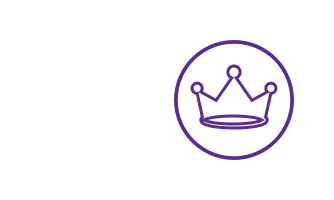The importance of digital dexterity
From digital to hybrid workplace
Digital dexterity dissected

The tools
Digital dexterity flourishes within a corporate culture that relentlessly embraces new digital technologies. This is how you strengthen your organization’s success. Digital dexterity works in four specific areas: the workspace, work, tools and business. Customer expectations have changed and digitally savvy employees and organizations are best armed to respond.
The
digital
Brandon Vigliarolo, TechRepublic
“Digital dexterity is
about building a
technology-friendly
corporate culture. It is not so much a technical concept as a cultural one.”


The workspace

The business

Work

The success of the organization
Organizations must think and act digitally to meet ever-increasing customer expectations.
... implies that employees and the organizations are becoming more dexterous: learning never stops and evolves along with new technological possibilities.
Relentlessly embracing new digital technologies
A corporate culture
- ... the shared habits, norms and rules within an organization.
- ... defines how employees and organizations do things.
- ... makes it clear that it is about more than just technology; more than that it is about people.

Digital dexterity is…

Jan Sonck
Strategy Manager, Proximus
“If we want this new normal with a decentralized way of working, then we need to review a few things: the leadership styles, the performance appraisal systems, the collaboration models, the corporate culture, and why not our entire business model.”



Organizations and companies play a crucial role in this = they have to ensure that...
- employees are given the tools and training to work optimally;
- employees are given the space to arrange their work themselves;
- collaboration with colleagues is made as easy as possible, both online and offline.
Empirical research from Prithwiraj Choudhury from the Harvard Business School has shown that teleworkers are more productive but often lose out on creativity and innovation. People who work together in the same room solve problems more creatively and more quickly than remote workers. It will therefore become very important within the future hybrid workplace to find a good balance between remote and on-site working.
COVID-19 has taught us not to lose sight of the crucial importance of social contact. We are social beings and a ‘social distancing’ reality is not our natural habitat. Physically coming together to realize projects remains necessary. Working completely from a distance is ultimately counterproductive in the long run.
The hybrid workplace combines the best of many worlds: organizations support and encourage their digital employees to collaborate in different ways, both remotely and physically in the same location.

From digital to
hybrid workplace


“The digitally savvy organization is a supporter of the digitally savvy employee.”

Er is geen gebrek aan digitale kanalen om met collega’s te communiceren. Chat, videobellen, email, posts (in bv. Teams)… Naast al die reguliere kanalen zijn er ook nog de informele kanalen: WhatsApp, Facebook…
Wie contacteert u nu best via welk kanaal?
Goede afspraken maken goede collega’s. Maak dus duidelijk welk kanaal waarvoor gebruikt kan en moet worden en geef aan wat niet kan vanwege security of andere redenen.

Read more: The digital savvy employee
The importance of
Er is geen gebrek aan digitale kanalen om met collega’s te communiceren. Chat, videobellen, email, posts (in bv. Teams)… Naast al die reguliere kanalen zijn er ook nog de informele kanalen: WhatsApp, Facebook…
Wie contacteert u nu best via welk kanaal?
Goede afspraken maken goede collega’s. Maak dus duidelijk welk kanaal waarvoor gebruikt kan en moet worden en geef aan wat niet kan vanwege security of andere redenen.
Because customer expectations are constantly changing. Today’s best practice is tomorrow’s standard.
(1) Source: How COVID-19 has changed B2B sales forever, McKinsey, October 2020

digital dexterity

The digital customer wants ...
More information faster: customers (both consumers and businesses) first search for information online. So make sure all information can be found quickly through the relevant channels (through your website, social media, blogs, vlogs, online appointments, etc.).
More customized options: customers are increasingly looking for customized service. Smart companies therefore collect as much information as possible and use it to set up personalized services.
More automation: customers expect a seamless experience, no matter what channels are combined. Digitally savvy organizations ensure that switching between channels is intuitive and smooth and all relevant information is reproduced correctly.
More contact: customers are online 7 days a week, 24 hours per day. So you need to be available on the channels where your customers are active. How do you organize that internally, taking home working into account? You can virtualize your telephone exchange. Integrate social media and use chatbots and virtual assistants to answer simple questions from customers, let them book appointments online and more. This way, you can work up to 30% more efficiently in your customer service area.
More flexibility: customers expect ‘instant gratification’. Make sure that in case of problems your employees can deal with the situation flexibly and quickly provide appropriate solutions. All too often, customers are lost due to rigid refund or compensation policies. Attracting new customers ultimately costs much more than retaining existing ones.
These 5 trends will take your customer service to the next level
... of B2B corporate buyers prefer digital self-service and remote interactions. The main reasons: ease of scheduling appointments, saving on travel time and expenses, and security. (1)

Brandon Vigliarolo, TechRepublic
“Digital dexterity is
about building a
technology-friendly
corporate culture. It is not so much a technical concept as a cultural one.”

- ... to communicate are more varied than ever.
- ... to collaborate are primarily in the cloud.
- ... to manage projects and tasks are increasingly managed by the employees themselves.
How we work = the tools
- ... happens anytime and anywhere.
- ... is increasingly entirely independently.
- ... happens anytime and anywhere.
What we do = work
- ... varies more than ever (at home, in the office, on the move).
- ... must be continuously secure and virus-free (both digital and non-digital).
- ... is the location where people are both collaborating and working individually.
Where we work = the workspace
How we create added value = the business
- ... takes decisions, always based on data.
- ... innovates from a ‘digital first mindset’.
- ... puts the customer at the center of everything..
Digital dexterity flourishes within a corporate culture that relentlessly embraces new digital technologies. This is how you strengthen your organization’s success. Digital dexterity works in four specific areas: the workspace, work, tools and business. Customer expectations have changed and digitally savvy employees and organizations are best armed to respond.
The
digital



Jan Sonck
Strategy Manager, Proximus
“If we want this new normal with a decentralized way of working, then we need to review a few things: the leadership styles, the performance appraisal systems, the collaboration models, the corporate culture, and why not our entire business model.”
The success of the organization
Organizations must think and act digitally to meet ever-increasing customer expectations.
... implies that employees and the organizations are becoming more dexterous: learning never stops and evolves along with new technological possibilities.
Relentlessly embracing new digital technologies
A corporate culture
- ... the shared habits, norms and rules within an organization.
- ... defines how employees and organizations do things.
- ... makes it clear that it is about more than just technology; more than that it is about people.
Digital dexterity is…

“The digitally savvy organization is a supporter of the digitally savvy employee.”

Organizations and companies play a crucial role in this = they have to ensure that...
- employees are given the tools and training to work optimally;
- employees are given the space to arrange their work themselves;
- collaboration with colleagues is made as easy as possible, both online and offline.
Empirical research from Prithwiraj Choudhury from the Harvard Business School has shown that teleworkers are more productive but often lose out on creativity and innovation. People who work together in the same room solve problems more creatively and more quickly than remote workers. It will therefore become very important within the future hybrid workplace to find a good balance between remote and on-site working.
COVID-19 has taught us not to lose sight of the crucial importance of social contact. We are social beings and a ‘social distancing’ reality is not our natural habitat. Physically coming together to realize projects remains necessary. Working completely from a distance is ultimately counterproductive in the long run.
The hybrid workplace combines the best of many worlds: organizations support and encourage their digital employees to collaborate in different ways, both remotely and physically in the same location.
hybrid workplace
From digital to

(1) Source: How COVID-19 has changed B2B sales forever, McKinsey, October 2020
... of B2B corporate buyers prefer digital self-service and remote interactions. The main reasons: ease of scheduling appointments, saving on travel time and expenses, and security. (1)
The digital customer wants ...
More information faster: customers (both consumers and businesses) first search for information online. So make sure all information can be found quickly through the relevant channels (through your website, social media, blogs, vlogs, online appointments, etc.).
More customized options: customers are increasingly looking for customized service. Smart companies therefore collect as much information as possible and use it to set up personalized services.
More automation: customers expect a seamless experience, no matter what channels are combined. Digitally savvy organizations ensure that switching between channels is intuitive and smooth and all relevant information is reproduced correctly.
More contact: customers are online 7 days a week, 24 hours per day. So you need to be available on the channels where your customers are active. How do you organize that internally, taking home working into account? You can virtualize your telephone exchange. Integrate social media and use chatbots and virtual assistants to answer simple questions from customers, let them book appointments online and more. This way, you can work up to 30% more efficiently in your customer service area.
These 5 trends will take your customer service to the next level
More flexibility: customers expect ‘instant gratification’. Make sure that in case of problems your employees can deal with the situation flexibly and quickly provide appropriate solutions. All too often, customers are lost due to rigid refund or compensation policies. Attracting new customers ultimately costs much more than retaining existing ones.
Because customer expectations are constantly changing. Today’s best practice is tomorrow’s standard.
digital dexterity
The importance of


